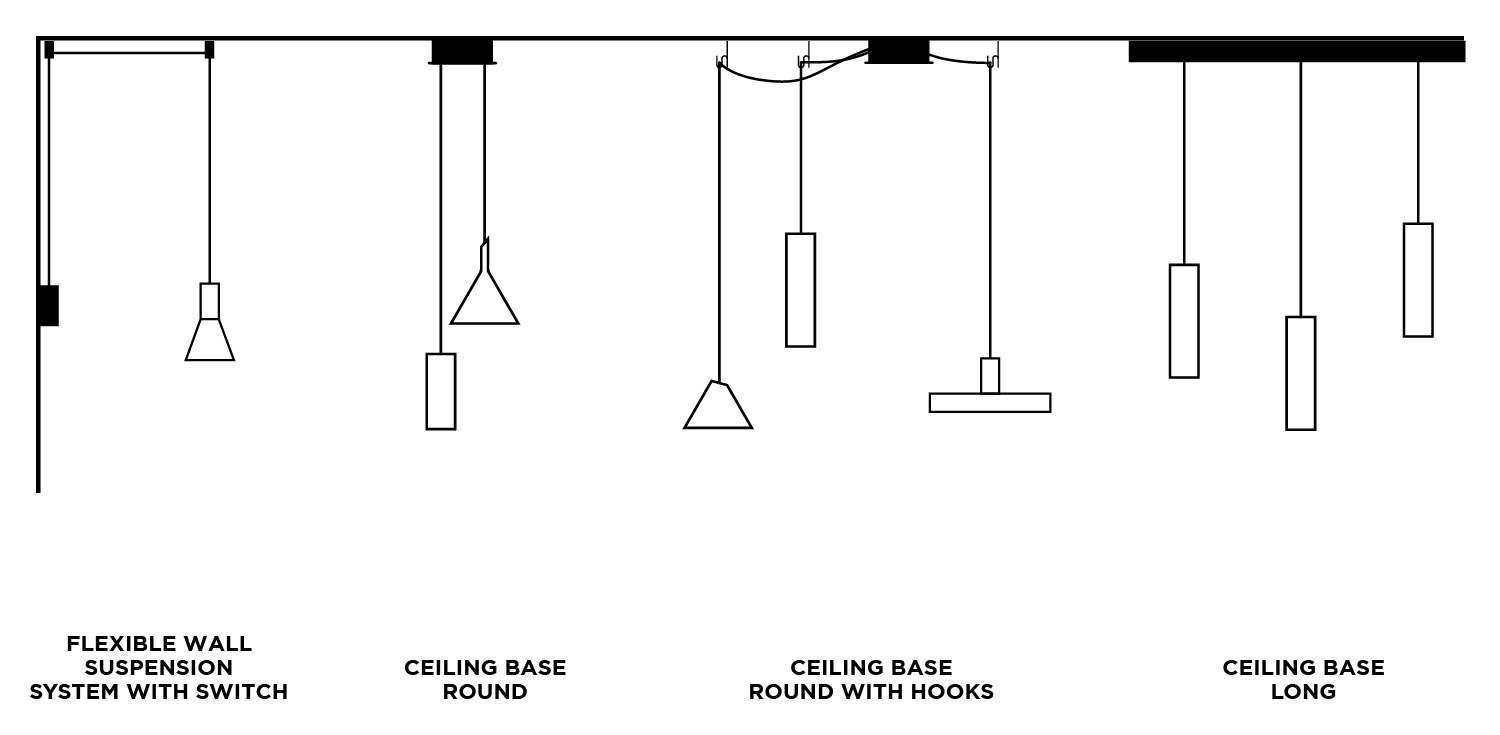Come on, let's chill
Falling asleep with a bowl of popcorn in front of a Saturday night thriller is by no means all we want to do in the living room. So, in addition to warm mood lighting, there should also be sufficient reading and working light. Especially if we often use the room as a home office or the dining room merges seamlessly into the living area. For this reason it is best to use several light sources to create an atmospheric mix of direct and indirect lighting. What is the best way to do this? Find out in our tips on living room lighting.
Perfect ambient lighting
SEE CLEARLY
Even though our favourite room is all about cosiness: ambient lighting of 100-200 lm/m2 is an absolute must in the living room, too. So just take a close look at the room size, wall colour and floor and get a feel for which luminaire fits in the room best. Are the ceilings fairly low? Then small spots like >PIRRO or >SOLID are a good solution. Do you have an extendable dining table or do you like to rearrange your furniture? Then you should go for a flexible rail system. This makes it simple to reposition luminaires and control them separately. An important point for any type of ambient lighting.
Create a mood with light zones
HOW COZY
Light zones are a great way to make a room look bigger and more interesting. Especially when they are arranged as an “indoor skyline” at different heights. What’s the best way to do this? For example, with an elegant reading lamp that quickly transforms the area around the vintage armchair into a cosy browsing zone. Or with an unusual floor lamp like DRO, which is both an eye-catcher and a room partition. An important thing for light zones that are intended for working or reading: always ensure glare-free, neutral white light! Take a tip from us: use luminaires with “dim-to-warm” effect, which change from warm mood light to cooler working light with a simple twist. Light colours between 1,800 and 3,000 K can be selected.
This is how wall lights become a work of art
PICTURE PERFECT
It’s not just your favourite music that creates a better atmosphere in the living room. Decorative wall lights also skilfully set the scene in the room. These are especially popular with our interior designers: statement lights such as >VENN or FINLIN, which are mounted on the wall in small groups. The best place for this: directly above the sofa, where their extraordinary design is set off particularly beautifully. Do you need even more ambience? Then you can also work with discreet edge lighting that perfectly accentuates furniture and other accessories.

Lighting ideas for the conservatory
EVERYTHING SPOT ON
A conservatory is a great thing. After all, your place under your favourite palm tree is guaranteed to be free all year round. The only remaining question is: where to put the lighting? Let’s face it, the walls and ceiling consist largely of plain glass surfaces. The solution: flexible track systems like STREX, enabling you to suspend several luminaires and even control them separately. Or you can opt for a multiple canopy. This, too, makes it possible to combine many different models and so ensures a great mix of styles.
What to look out for in the lighting of old buildings
aim high
High ceilings, elegant double doors and with a bit of luck even the odd original stucco ceiling – an old building like this knows how to win our hearts. Even so, designing the lighting here can be quite tricky. Because especially in large rooms individual luminaires can easily look lost. The solution: a multiple suspension arrangement with pendant luminaires like >WIRO or >WETRO, with which the room height can be visually reduced. An effect that can also be achieved with beautifully designed wall luminaires like TRACE or >TRAIN.
The most important questions about living room lighting
A high-quality LED luminaire can be recognised by three things. Firstly, the quality of colour rendering (CRI 90+), secondly, the interchangeability of the LED module and thirdly, its service life. This should be around 50,000 hours for high-quality models, though this is topped by Wever & Ducré luminaires. Their minimum service life is a full 60,000 hours.
Dimming LEDs without flickering is no longer a problem. However, it should be noted that only the brightness of the light is adjustable. If you also want to adjust the light colour, it is best to use “dim-to-warm” solutions. In this way you can switch from cosy feel-good lighting to neutral white working light at any time. Positive side effect: cooler light is not only better for the eyes, but also improves concentration.
If there is only one light outlet in your living room, multiple canopies or track systems are the perfect solution. Particularly convenient: depending on the type of track, the luminaires can be controlled together or individually.

An important criterion: the luminaire must not cause glare. The light beam should therefore be particularly narrow or should be emitted below eye level. The ideal height is approx. 60-80 cm above the dining table.
In principle, “dim-to-warm” regulates light colour by reducing current. However, as only a small reduction is involved, it only has a minimal effect on power consumption.






































